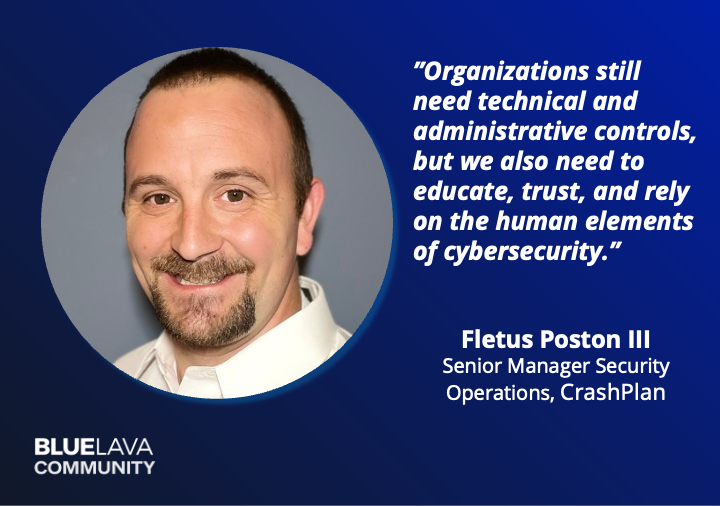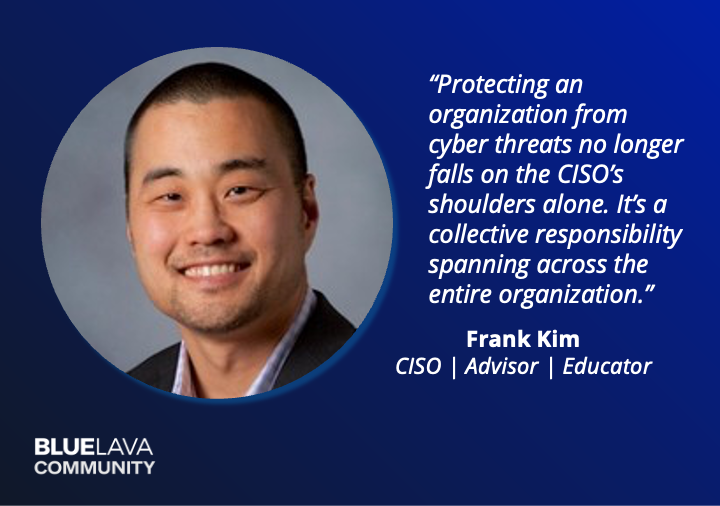

Your Blueprint for Success: The Starter Guide for CISOs (Part 4)
Blog Post
Your Blueprint for Success: The Starter Guide for CISOs (Part 4)
Demetrios Lazarikos (Laz)
March 18, 2022
Summarize What You’ve Learned
This series was written by CISOs for new CISOs. Our goal was to introduce you to the necessary steps to successfully navigate your new role – all through the lenses of peers that have been through this before.
In part one, Phil Beyer, Head of Security at Etsy, offered some great tips on pre-onboarding steps you can take to help give you an advantage on your first day on the job. Having a head start is important.
In part two, Blue Lava’s very own Demetrios Lazarikos (Laz), offered ways to get to know your new team and how to foster key relationships early on. These are the people you are going to count on and establishing a connection with them is paramount.
In the third part of this series, Laz continued the conversation and presented ways to learn the goals of other executives in your company and how to build cross departmental work relationships with co-workers in order to implement a successful, company wide security program. Learn the business, get to know the pain points of others at the executive level and this will help you prioritize your security investments.
By now, you’ve met with your team, listened to their concerns, and made your own assessment of the program’s strengths and weaknesses. It is time to reflect and prepare to share your observations with your team.
In our last installment of this series, we build upon what you’ve learned to date and provide your final steps. We also offer you some additional resources to assist you on this journey.


Part 4 – Put a Human Face on Security
Approaching the role by prioritizing your team can help repair past bridges or build new ones. As mentioned, these will be your allies in implementing security efforts going forward.
You should now have a good understanding of what has been done in both past and current open projects. Use this time to document what you have seen, your assumptions, and other thoughts on how the team interacts and where improvements can be made. Share your findings with everyone you met. Use a follow-up meeting to deliver this information as much of it is easily misunderstood.
Be cautious with how you present your findings. Each audience (boss, peers, direct reports, team members) is still getting to know you and will be listening for different indicators of how you will lead. Feel free to follow this guide for your follow-up meetings with each audience:
Leadership
- Focus on the initial improvement opportunities you’ve discovered
- Cite deficiencies if there are major risks or impediments to progress
- Avoid requesting more resources without conducting a more thorough analysis
Peers
- Focus on opportunities that will improve collaboration and communication
- Cite weaknesses only if they are currently impacting team relationships
Direct Reports
- Focus on the strengths you observed that will enable future success
- Avoid references to previous program leaders, strategy, and decisions
Team Members
- Be concise, clear, and informal
- Empathize with your team on how difficult it can be to accept change
- Celebrate successes, wins, and hard work
- Cite one or two exciting opportunities to inspire your new team
Keep Reading
There is more to your success than can be found in a single guide, and we are here with you for the entire journey.




